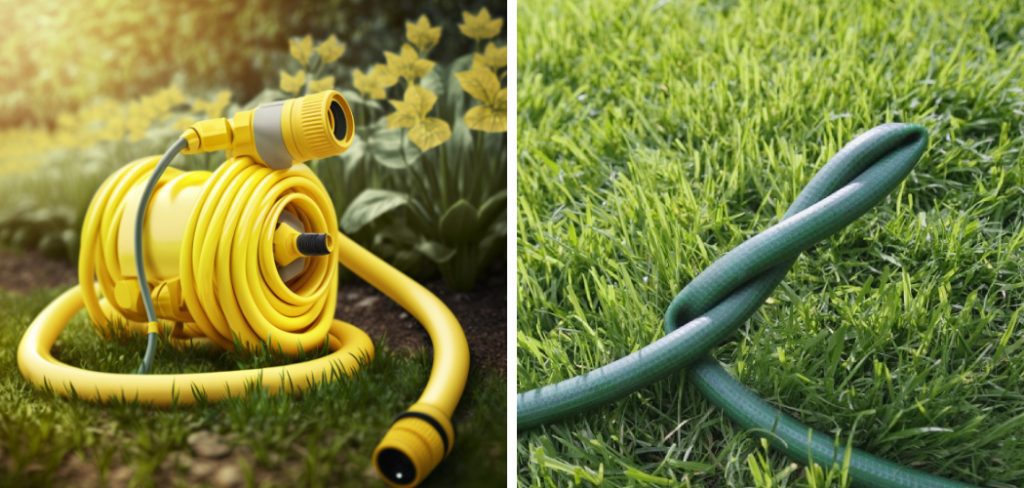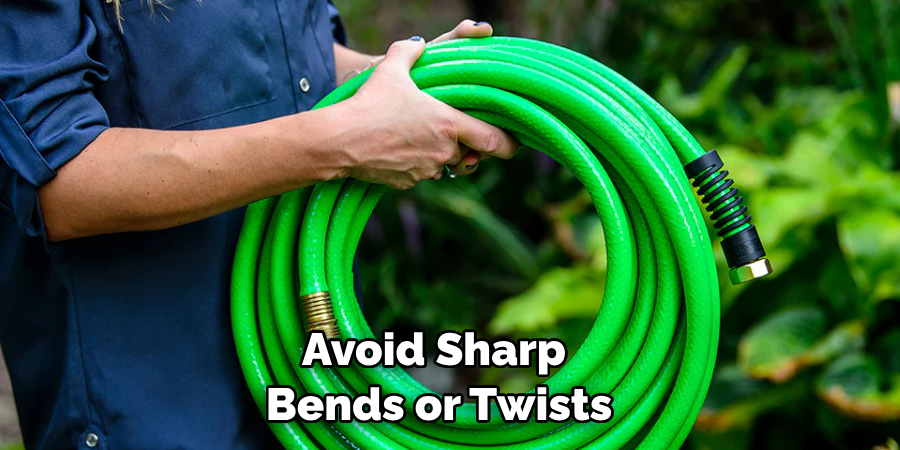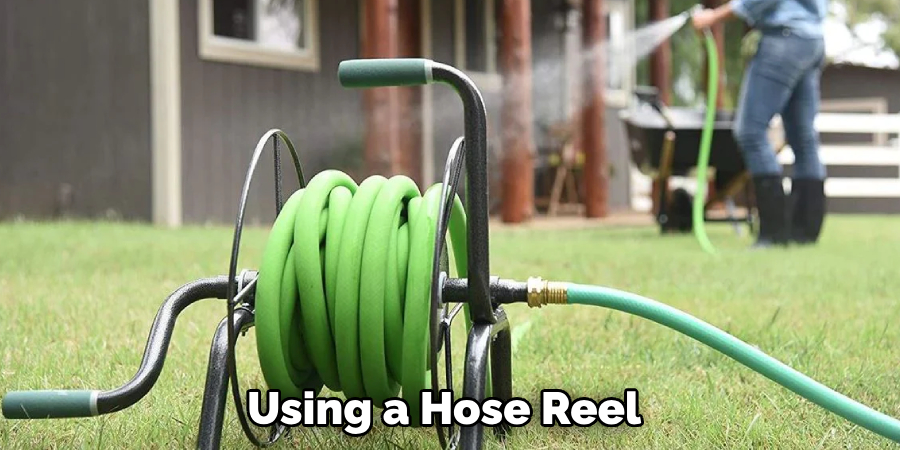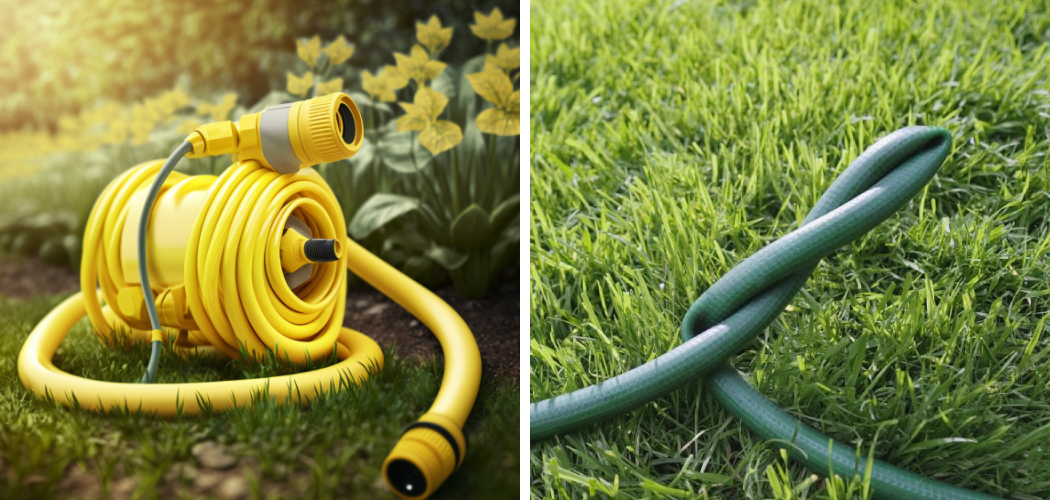To prevent a hose from kinking, choose a hose with a durable and flexible design, and use hose accessories like hose reels or guides to keep it properly aligned and stored.

How to Keep a Hose from Kinking: Step by Step Guide
The Importance Of Preventing Hose Kinks
The importance of preventing hose kinks cannot be overstated. Hose kinks pose various risks and inconveniences that can easily be avoided. When a hose kinks, it restricts the flow of water and may cause it to completely stop. This can be frustrating, especially when you are in the middle of watering your plants or washing your car.
Additionally, hose kinks can lead to the hose becoming damaged over time. The constant bending and twisting weakens the hose, making it more prone to cracks and leaks. Moreover, kinks can also cause the water pressure to build up, leading to bursts or leaks in the hose.
By taking simple steps like ensuring proper storage and avoiding sharp bends, you can prevent hose kinks and ensure the smooth flow of water whenever you need it.
Factors Contributing To Hose Kinking
Hose kinking can be prevented by considering factors like the material and quality of the hose. Evaluating these aspects can help in selecting the right type of hose that is less likely to kink. Additionally, the length of the hose and the way it is stored also play a significant role in preventing kinks.
Longer hoses tend to kink more easily, so it’s important to choose a length that is appropriate for the intended use. Proper storage, such as coiling the hose neatly, can also help prevent kinking. Moreover, the water pressure applied to the hose should be considered.
High water pressure can increase the chances of kinking, so it’s important to regulate the pressure accordingly. By paying attention to these factors, you can effectively keep a hose from kinking and ensure its longevity.
Tips For Preventing Hose Kinks
Preventing hose kinks is crucial for efficient water flow. Start by selecting the right hose for your specific needs and environment. Ensure proper installation and positioning to avoid unnecessary bends and twists. Utilize hose accessories, such as stabilizers or guides, to minimize the risk of kinks.
Remember to regularly inspect the hose for wear or damage, replacing it if necessary. Avoid sharp corners or obstructions that can cause the hose to kink. Maintaining a straight path for the hose will help prevent any potential kinks. By following these tips, you can enjoy uninterrupted water flow and extend the life of your hose.
Regular Maintenance And Care Practices
Regular maintenance and care practices are essential to keep your hose from kinking. Inspecting and repairing damaged hoses should be a priority to ensure their longevity. Check for any signs of wear and tear, such as cracks or leaks, and promptly fix them.

Remove debris and obstructions from the hose regularly to prevent blockages and kinks. Proper storage is also crucial in preventing kinks. Coil the hose neatly and avoid sharp bends or twists when storing it. Choose a designated area that is away from direct sunlight and extreme temperatures.
By following these maintenance and care practices, you can prolong the life of your hose and prevent kinking issues in the long run.
Best Practices For Hose Usage
To prevent a hose from kinking, it is essential to follow best practices when using it. One important rule is to avoid excessive pulling and dragging, as this can lead to unnecessary strain on the hose. Mindful maneuvering is crucial to prevent twists and bends, which can cause kinks.
Another tip is to minimize abrupt pressure changes when using the hose, as these sudden changes can also result in kinks. By being careful and attentive, you can ensure that your hose remains free from kinks and functions optimally. So, remember to handle your hose with care, avoiding unnecessary pulling and dragging, and being mindful of twists and sudden pressure changes.
Diy Solutions For Hose Kinks
Hose kinks can be frustrating, but there are diy solutions to keep them at bay. One technique is manually unkinking the hose by carefully straightening it out. Another option is creating supports or guides along the hose’s path to prevent kinks from occurring.
Additionally, innovative products and tools designed specifically for preventing kinks can be used. These products are designed to maintain the natural flow of water without any interruptions. By implementing these methods, you can ensure that your hose remains free from kinks, enabling hassle-free watering and other tasks.
So, say goodbye to frustrating kinks and enjoy a smooth water flow with these simple yet effective solutions.
Troubleshooting Common Hose Kinking Issues
Are you tired of dealing with kinks in your garden hose? Don’t worry, we’ve got you covered! In this blog post, we will provide troubleshooting solutions for stubborn kinks. Identifying and addressing specific kink-related problems is the first step. By examining the hose for any twists or bends, you can identify the root cause of the kinking issue.

Once identified, it is important to address the problem appropriately. Straightening the hose by gently pulling it in a straight line or using a hose reel can help prevent kinks. However, if the kinks persist despite your efforts, it may be time to seek professional help.
With their expertise, professionals can provide guidance on how to effectively eliminate kinks and ensure a smooth watering experience. So, say goodbye to frustrating hose kinks and enjoy hassle-free watering!
Frequently Asked Questions Of How To Keep A Hose From Kinking
How Can I Prevent My Garden Hose From Kinking?
To prevent your garden hose from kinking, try using hose guides or holders to keep it in place and avoid sharp bends. Additionally, make sure to drain the hose after each use and store it properly to keep it kink-free.
Why Does My Hose Keep Kinking?
There are several reasons why your hose may keep kinking. The most common reason is that it’s being twisted or bent at sharp angles. Other factors include poor hose quality, water pressure, and improper storage. Taking precautions can help eliminate or reduce kinking issues.
Can I Use A Kink-Free Hose?
Yes, you can use a kink-free hose. These hoses are designed with special materials and construction to reduce the chances of kinking. While they may still experience some minor kinks, they are generally more resistant and easier to untangle compared to traditional hoses.
How Can I Fix A Kink In My Hose?
To fix a kink in your garden hose, start by turning off the water supply. Then, gently straighten the hose along its length, working your way from one end to the other. If the kink doesn’t budge, you can release the water pressure and carefully use your hands to untwist or remove the kink.
Are There Any Alternatives To Preventing Hose Kinks?
Yes, there are alternative methods to prevent hose kinks. You can invest in a hose reel or cart to keep your hose organized and avoid tangling. Another option is to use a coil hose, which naturally resists kinking due to its coiled design.
Both choices offer convenience and ease of use while reducing the likelihood of kinks.
Conclusion
To keep your hose from kinking, it is crucial to follow a few simple yet effective steps. By choosing the right hose, using proper storage methods, and employing some handy accessories, you can ensure the longevity and optimal functionality of your hose.
Firstly, opting for a high-quality hose made from durable materials can significantly reduce the risk of kinking. Additionally, investing in a hose reel or hanger to store your hose properly can prevent unwanted twists and bends. Furthermore, utilizing hose guides or corners to redirect the flow can minimize stress on the hose and reduce the likelihood of kinks.
Lastly, always remember to drain the water from your hose after each use to prevent freezing or excessive pressure. Following these guidelines will help you enjoy a kink-free watering experience and prolong the lifespan of your hose.

